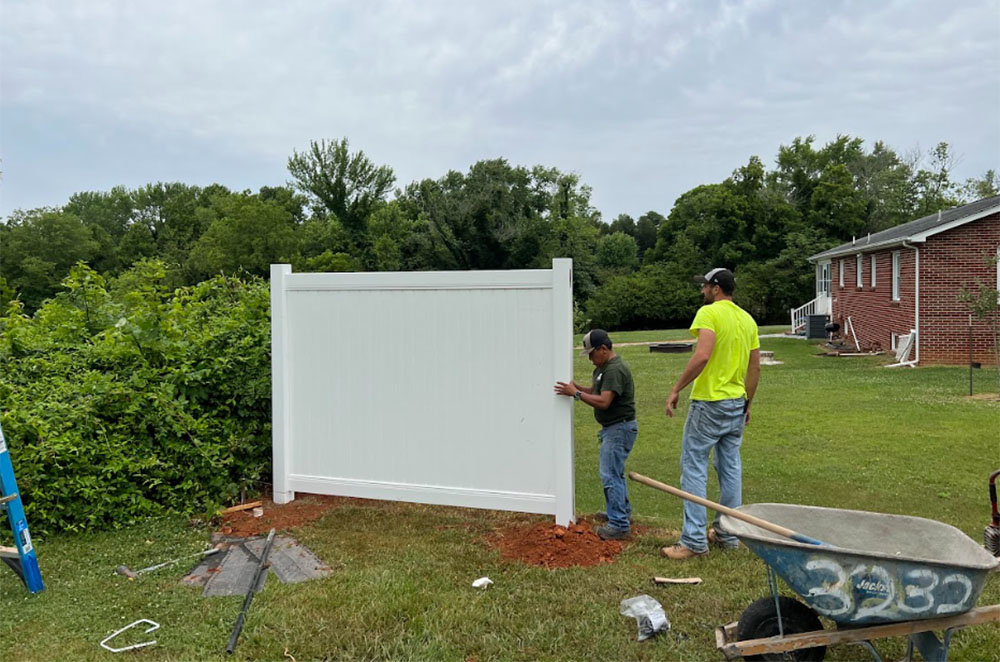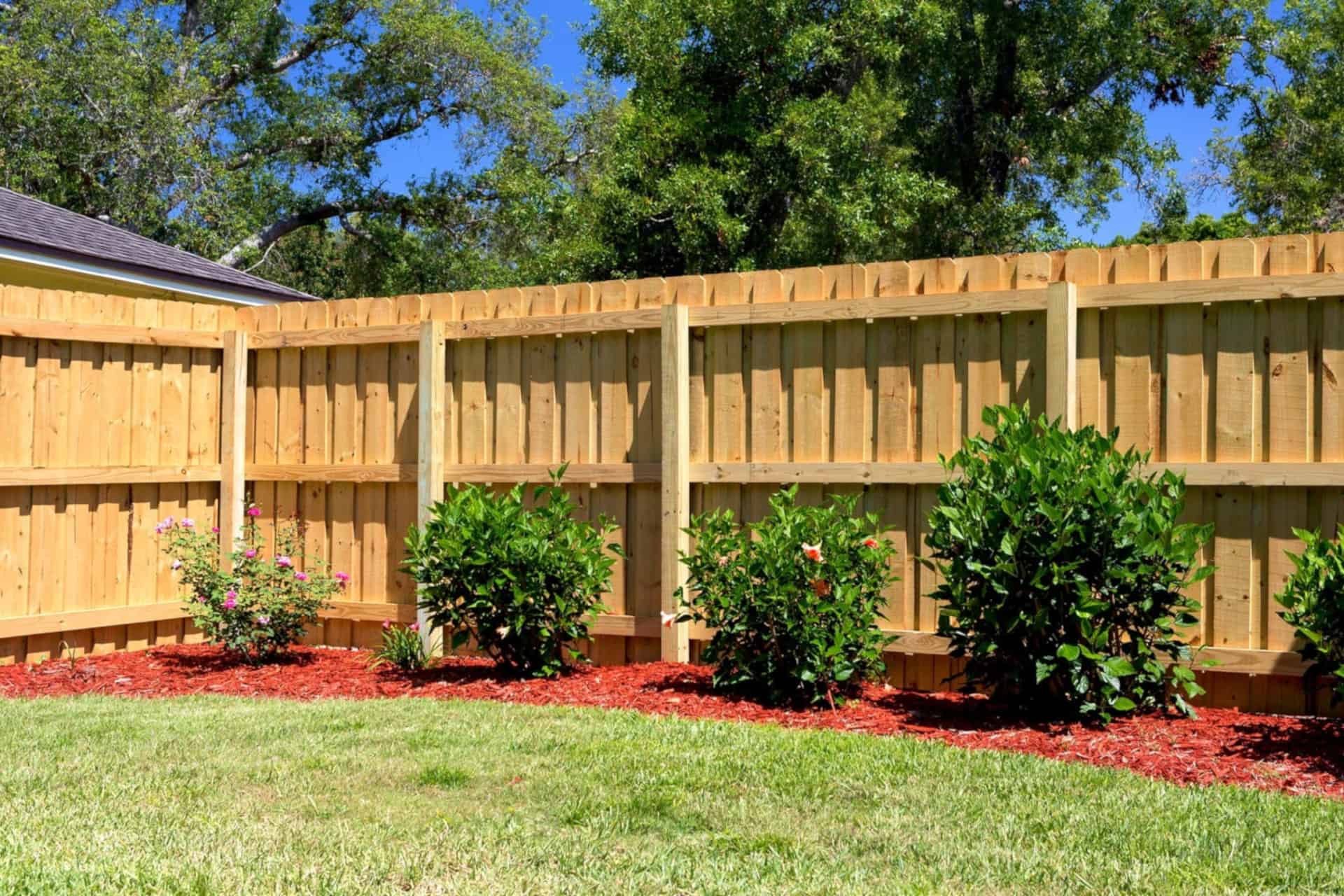How to Recognize Typical Issues That Require Immediate Fence Repair
It is essential to find issues before they end up being bigger problems when it comes to maintaining your fencing. Frequently checking for indicators of decaying wood, leaning panels, or corrosion can save you time and cash in the future. You might not recognize how weather condition and insects can endanger your fence's integrity. Allow's discover the usual indications that indicate your fencing requires instant focus, so you can keep your property protected and looking its best.
Indicators of Rotting Wood in Wooden Fences
Have you discovered your wooden fencing looking a little bit even worse for wear? If so, it may be time to look for indications of rotting wood. Initially, check out the base of the messages and panels for soft areas. That's a clear indication of rot if you press on the timber and it feels squishy or collapses. Next, look for discoloration or dark places on the timber-- these often signal wetness damage. Take notice of any peeling off paint or surface, as this can reveal the timber to additional decay. In addition, a pungent, musty smell can suggest fungal growth. Don't forget to check joints and links; if they hang or dropping apart, the wood below is likely jeopardized. By catching these indications early, you can prevent much more considerable damage and maintain your fencing standing strong. Regular upkeep is vital to prolonging the life of your wooden fencing.
Leaning or Tilting Fencing Panels
It's important to understand what triggered it if you have actually noticed your fence panels leaning or turning. This concern could suggest underlying architectural damage that needs your attention. Let's discover the typical causes and the repair work choices offered to get your fencing back fit.

Reasons of Leaning Panels
It's typically an indicator of underlying issues that need attending to when you discover your fencing panels tilting or leaning. One usual reason is inadequate water drainage; too much water can wear down the dirt around the fence articles, damaging their support. One more offender might be solid winds or tornados that push against the panels, specifically if they're not appropriately secured. Additionally, the natural settling of soil over time can cause messages to move, causing a tilt. Parasites, like termites, can endanger the stability of wooden panels, triggering them to lean. Inadequate installation methods may result in panels not being firmly set, leaving them vulnerable to leaning under stress. Address these issues immediately to preserve your fence's stability.
Indicators of Architectural Damages
Seeing leaning or tilting fence panels can be alarming, as these problems typically suggest structural damages that requires immediate focus. When your fence starts to lean, it might signify that the articles are shifting or that the soil around them has deteriorated. Pay attention to voids in between posts or panels, as these can additionally recommend instability. deck builder. In addition, look for splits or splintering in the wood, which can weaken the overall structure. If you see corrosion or rust on metal parts, it can compromise the honesty of the fence. Remember, overlooking these indicators can cause more serious damages down the line, so it's important to assess the situation quickly and do something about it before it aggravates
Repair Work Options Available

Rust and Deterioration in Steel Fences
If you have a metal fence, you could observe corrosion and rust creeping in over time, particularly if it's revealed to dampness. These issues not only impact the look of your fencing but can additionally compromise its structural stability. To recognize rust, seek reddish-brown spots or patches, which show the metal is oxidizing. Rust can spread rapidly if left neglected, leading and compromising the fence to expensive repairs.To deal with rust and rust, you must cleanse the influenced locations with a cord brush and apply a rust-inhibiting guide. Once the primer dries out, consider painting the fence with a weather-resistant paint to secure it better. Routine maintenance, such as evaluating for signs of corrosion and touching up paint as needed, will certainly aid prolong your fencing's lifespan. Dealing with these issues quickly ensures your steel fencing continues to be solid and aesthetically appealing for years to come.
Cracks and Splits in Plastic Secure Fencing

Root Causes Of Plastic Damage
Vinyl fence is popular for its longevity, yet it can still experience cracks and divides as a result of numerous variables. One major reason is extreme temperature level variations. When plastic expands in the heat and agreements in the cold, it can deteriorate the material with time. In why not find out more addition, direct exposure to extreme sunlight can lead to UV degradation, making the plastic weak. Physical effects, like hefty branches or unintended crashes, can additionally create splits. Poor setup or using low-grade products can aggravate these issues. Age plays a duty; older plastic fence is much more vulnerable to damage. Routine assessments can assist you identify these variables before they bring about significant issues. Take aggressive procedures to assure your fencing remains solid and undamaged.
Repairing Cracks Effectively
Cracks and divides in your plastic fence can be concerning, addressing them promptly can prevent more damages and preserve the fence's appearance. First, evaluate the size of the split. For little cracks, a plastic fixing kit frequently includes glue that can bond the edges, giving a smooth solution. Clean the area extensively prior to applying the adhesive, ensuring it sticks effectively. For larger divides, you may need to utilize a vinyl spot. Cut the spot to dimension, use adhesive around the sides, and press it securely onto the split. Permit it to cure as per the supplier's directions. Routine maintenance and fast repair work can extend your fence's lifespan, keeping it looking excellent for several years to find.
Loosened or Missing Fencing Posts
Loose or absent fence blog posts can threaten the stability of your whole fencing structure. It's important to deal with the concern quickly if you see any kind of blog posts leaning or tottering. Examine for any type of indicators of movement, as this can lead to additional damages gradually. You can easily evaluate the issue by providing each article a gentle shake-- if it really feels unpredictable, it's time to take action.For missing messages, you'll need to replace them asap to maintain your fence's integrity. Make sure they're firmly secured in the ground with concrete or crushed rock for added security when you set up brand-new blog posts. If a post is loose, tighten it by adding extra assistance or driving it deeper into the ground.Ignoring these issues can bring about larger troubles, like spaces in your fence and even full collapse. Maintain an eye on your posts and stay proactive about repair work!
Damage From Climate and Natural Components
Weather and natural components can ruin your fencing, leading to various forms of damages that call for prompt interest. Hefty rainfall can create wood to rot, making it weak and unpredictable. Snow accumulation may flex or break panels, while strong winds can uproot fence articles or cause areas to lean.If you see cracks or splintering in wood fencings, it suggests drying out due to intense sunlight exposure. Steel fencings can corrosion if protective layers put on off, especially in the original source damp or seaside areas.Inspect your fencing routinely after storms or extreme climate to capture any type of damage early. Attending to these concerns rapidly can save you from pricey repairs down the line. Do not wait until a small issue becomes a major one; remain positive and maintain your surround top form to preserve both functionality and curb allure.
Insect Invasion and Termite Damage
When you discover signs of parasite problem or termite damages, it's vital to act swiftly to avoid more destruction. Try to find mud tubes along your fencing or hollow-sounding timber, as these indicate termites go to work. You could likewise see small holes or frass, which is termite droppings looking like sawdust. If you detect any one of these indications, it's time to evaluate the damage.Don' t wait up until it's too late; bugs can endanger your fence's stability. Inspect the surrounding area for beetles or ants, as they might be adding to the problem. If you suspect an invasion, consider speaking to a bug control expert to treat the issue.repairing and verify or changing affected sections of your fence quickly not only restores its strength yet also protects against insects from spreading out additionally. Remain cautious to maintain your residential property pest-free and safe and secure.
Regularly Asked Questions
Just how Usually Should I Inspect My Fencing for Damage?
You need to check your fencing at least two times a year, preferably during spring and loss. Normal checks aid you find damage early, conserving you time and cash on fixings while preserving your building's look and safety.
Can I Repair a Fence Myself or Hire an Expert?
If you have the right tools and skills, you can certainly repair a fence on your own. Nonetheless, working with a specialist assurances top quality job and saves you time, especially for complicated repair services or considerable damage.
What Equipment Are Required for Standard Fence Fixings?
For fundamental fencing repairs, you'll require tools like a hammer, screwdriver, pliers, a saw, a degree, and determining tape. deck builder. Depending on the repair work, you may also call for nails, screws, or substitute boards
Just How Much Does Fence Repair Work Normally Price?
Fencing repair work expenses differ extensively, however you can expect to pay in between $200 and $1,500 depending on materials, labor, and extent of damage. It's smart to obtain numerous quotes for the best deal.
When Is the Best Time of Year for Fence Repairs?
The best time for fence repair services is throughout light weather, generally in springtime or very early autumn. You'll stay clear of severe temperatures, making it much easier to my review here work and making sure the products established correctly for lasting toughness (deck builder). Seeing tilting or leaning fencing panels can be disconcerting, as these issues typically indicate architectural damage that needs immediate attention. Absent or loose fence messages can undermine the stability of your whole fencing framework. Snow accumulation may flex or damage panels, while strong winds can root out fence messages or cause areas to lean.If you discover cracks or splintering in wood fences, it's a sign of drying out due to extreme sun direct exposure. Metal fencings can rust if protective finishes use off, particularly in moist or seaside areas.Inspect your fence routinely after tornados or extreme weather to catch any kind of damages early. Fence repair service expenses vary commonly, however you can expect to pay in between $200 and $1,500 depending on products, labor, and degree of damages